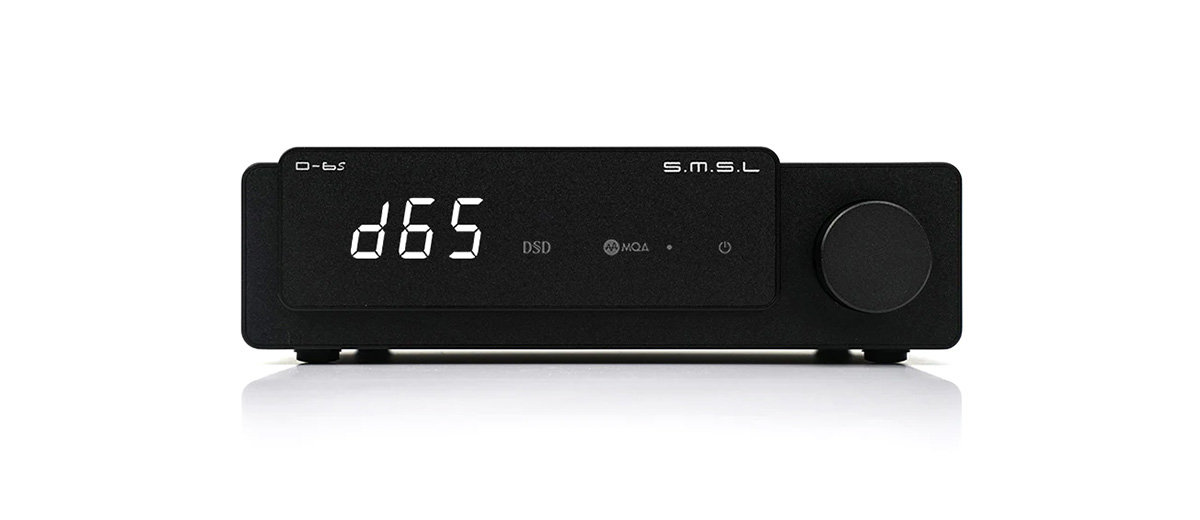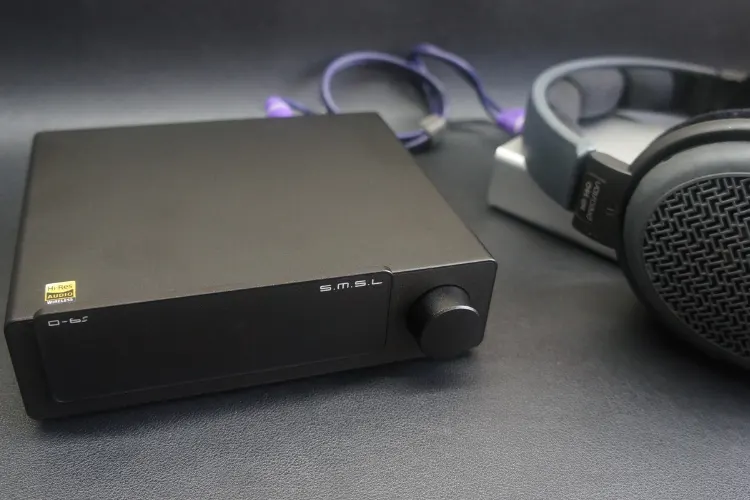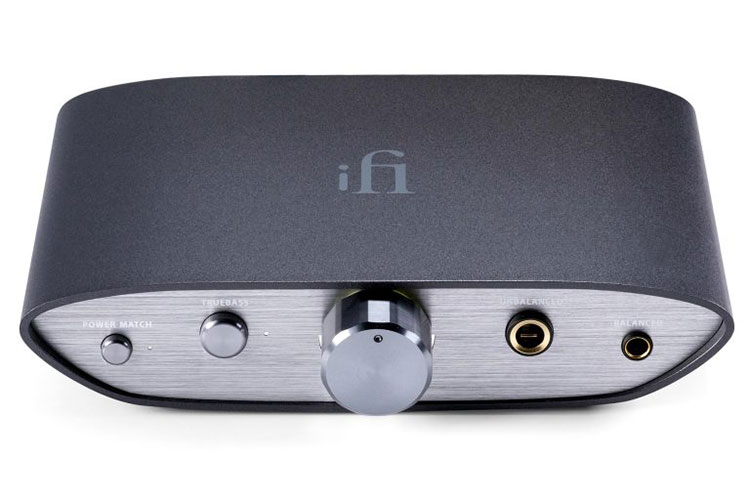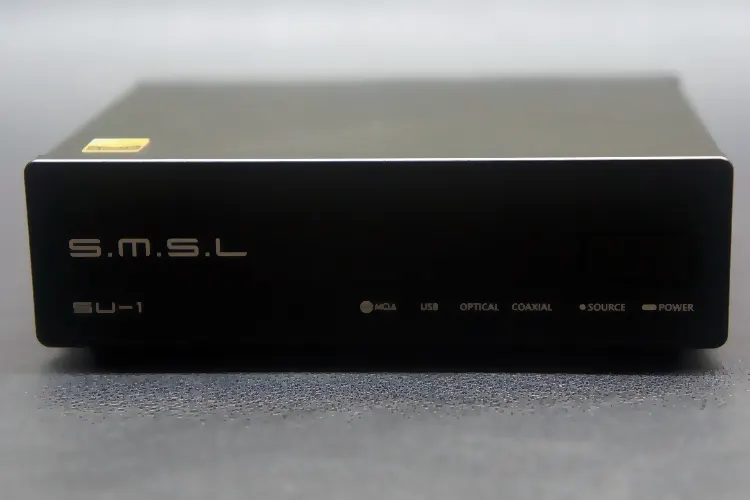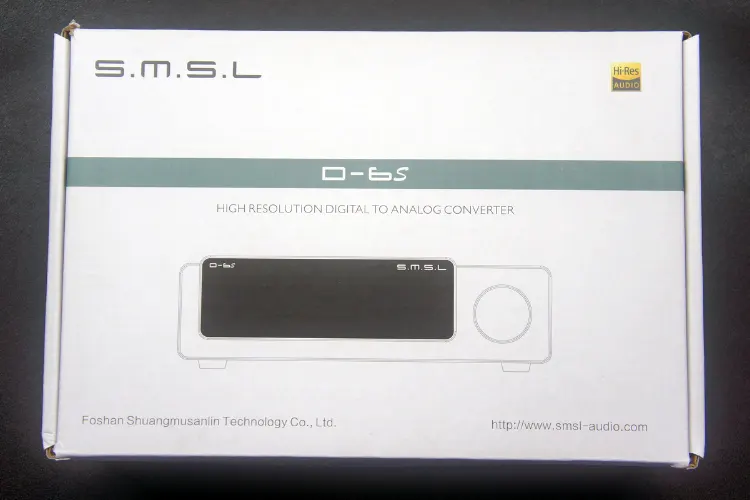Synergy
Based on my testing, the DAC pairs best with an amplifier with a similarly clean and unadulterated tonality.
I found that it pairs well with amplifiers such as the Topping L30 II. The DAC enhances the already clean presentation of the amp, whilst ensuring a strong enough power output even for demanding planar magnetic headphones.
The L30 II is a neutral yet flat-sounding amplifier, the additional dynamics and excitement added by the D-6S contribute to a fun-sounding signature that does not color the overall sound.
I enjoyed the D-6S and L30 II combo with the Modhouse T50rp Argon MK3. Being a warm-sounding headphone, I prefer DACs that do not go beyond or alter the coloration introduced by the headphones.
Through my Sennheiser HD 580 Precision, the improved dynamics and texture of the D-6S were more than welcome, giving the usually flat-sounding tuning from the Sennheisers the slight boost that made modern pop and hip-hop music more engaging.
Select Comparisons
iFi Audio ZEN DAC V1
Technical
The SMSL D-6S features the ESS ES9039Q2MDAC chip supporting PCM up to 32-bit/768kHz and DSD512, in addition to supporting MQA decoding. Whilst the iFi Audio ZEN DAC V1 features a Burr-Brown True Native chipset that supports PCM and DXD up to 32-bit/384kHz, and DSD256.
As a DAC/AMP combo, the iFi Audio ZEN DAC is inherently more feature-rich than the D-6S. Since it comes built-in with an amplifier as well, the ZEN DAC also comes with a 6.35mm SE out, as well as a balanced 4.4 Pentaconn output.
For the sake of this comparison however, we will be neglecting the amplifier performance of the ZEN DAC and comparing it strictly as a DAC via its RCA outputs with its output mode set to fixed.
The ZEN DAC only has a sole USB-B input connector, compared to the four inputs present in the SMSL D-6S (USB-C, Optical, Coaxial, Bluetooth). Additionally, the D-6S has XLR outputs that the ZEN DAC does not.
The D-6S is powered by 100-230V AC while the ZEN DAC is simply powered via USB, however, the ZEN can also be powered with an optional 5V barrel jack.
Design
The SMSL D-6S has a sleek CNC-machined aluminum alloy housing with a black anodized finish. This, in conjunction with its use of a frosted plastic screen and a faceplate with a single knob, makes it an unassuming device in the context of a whole system.
The iFi Audio ZEN DAC V1 on the other hand has a sleek trapezoidal aluminum chassis with curved edges and a smooth volume knob on the brushed front panel. The ZEN’s unique shape and two-tone color scheme make it stand out compared to most Hi-Fi equipment.
The D-6S is much wider and deeper than the ZEN DAC, with the height of both units being somewhat similar.
Aesthetics is inherently subjective by nature, what is considered attractive depends on the user. What is certain is the fact that the ZEN DAC stands out more than the D-6S in terms of design.
Despite having a simpler and sleeker design, the D-6S has much more intuitive controls via its screen and remote control, which are both lacking with the ZEN DAC.
Performance
When comparing strictly the DAC performance of the two DACs by connecting them to the same amplifier and pair of headphones, the D-6S simply outclasses the ZEN DAC.
The ZEN is much warmer, with its emphasized bass coming off as boomy and bloated compared to the D-6S. Because of this, the ZEN gives bass guitars and male vocals more “body”, but it does so at the expense of sub-par texture and detail retrieval.
The Mids, especially string instruments, were played back with significantly more texture and resolution through the D-6S when compared to ZEN DAC. The ZEN DAC gives the mids a veiled sound signature that muffles detail and nuance out of the mids.
The highs on the D-6S were much more detailed and textured. Once again, the dynamics of the overall sound made the highs easier to isolate within the mix.
When paired with the Argons, the added warmth of the ZEN was a bit overwhelming and came off as too warm but switching to the D-6S remedied this.
Even when paired with my HD 580 Precision, headphones that I usually prefer with some warmth, I still preferred the D-6S because of the sheer improvement of its detail retrieval and dynamics compared to the ZEN DAC.
SMSL SU-1
Technical
The SMSL D-6S features the ESS ES9039Q2MDAC chip supporting PCM up to 32-bit/768kHz and DSD512, in addition to supporting MQA decoding. Whilst the SMSL SU-1 makes use of the AKM AK4493S DAC chip with identical PCM and DSD support.
The SU-1 has three inputs, a USB-C input, a Coaxial input, and an Optical output. This is less compared to the four inputs present in the SMSL D-6S (USB-C, Optical, Coaxial, Bluetooth). Additionally, the D-6S has XLR outputs that the SU-1 does not.
The D-6S is powered by 100-230V AC while the su-1 is simply powered via USB. When in USB mode, the SU-1 can be powered by the source device. However, when in either optical or coaxial mode, the SU-1 must be plugged into a 5V USB power adapter.
Design
Coming from the same manufacturer, both the SU-1 and D-6S share a similar design language, making use of CNC-machined aluminum alloy housings with a black anodized finish. Both units are quite sleek and go well in most hi-fi systems.
The D-6S is sizably larger than the SU-1 in every dimension, these two products do not even appear to be in the same weight class.
The sleek silhouette of the SU-1 is met with pure utilitarianism, with a sole button being responsible for power and source selection, and individual LEDs being responsible for displaying the selected source.
The D-6S on the other hand, is sleek, but by no means barebones. It sports a frosted plastic LCD display that is used to navigate menus and display the format being decoded. The D-6S also makes use of a knob for volume control and menu navigation.
Performance
The bass on the SU-1 has noticeably less punch and texture. The sheer detail retrieval in the bass region is quite similar, however, individual hits of the bass drum or bass guitars have more authority and are played back in a more satisfying manner through the D-6S.
The increased texture in rumbling sounds also adds to the improved sound stage that the D-6S has over the SU-1.
The first thing that stood out to me when comparing the D-6S and the SU-1 is the sheer difference in midrange dynamics between the two DACs.
The SU-1 is sufficiently detailed and resolving, but the increased dynamics of the D-6S just gave it a more engaging, energetic, and overall enjoyable to listen to. In acoustic and rock tracks with complex mixes in the mid-range, I consistently preferred the D-6S over the SU-1 by a long shot.
The highs on the D-6S were much more detailed and textured. Once again, the dynamics of the overall sound made the highs easier to isolate within the mix.
When paired with both the Argons and the HD580, the somewhat similar sound signature between the 2 DACs, and the noticeable dynamics and texture improvements of the D-6S made me consistently pick it over the SU-1 every time.
Our Verdict
The SMSL D-6S value proposition makes this a very competitive desktop DAC. It offers a good range of inputs, a sleek fit and finish, and an impressive level of dynamics and textured performances.
The use of a high-end DAC chip found in streamers and DAC units twice the price shows, with the D-6S consistently beating out any DAC I threw at it.
It isn’t perfect; I could use some more top-end energy and perhaps some more chamfering on the unit’s display panel. However, its package of all the inputs most people would need, plus good technicalities makes the D-6S an easy recommendation in my book.
SMSL D-6S Technical Specifications
- Inputs: USB, optical, coaxial, Bluetooth
- Outputs: RCA, XLR
- THD+N: 0.00006% (-123dB)
- Line output amplitude: XLR: 5Vrms, RCA: 2.5Vrms (1.13Vrms)
- Output impedance: XLR: 100Ω
- Dynamic range: XLR: 129dB RCA: 126dB
- SNR: XLR: 129dB RCA: 126dB
- USB transmission: Asynchronization
- USB compatibility: Windows 7, 8, 8.1, 10, 11 (needs driver); Mac OS X 10.6 or later, Linux (driverless)
- Sampling rate and bit depth:
- USB: PCM: 44.1-768kHz (32bit) DSD: 2.8224-22.5792MHz (1bit) DoP: DOP256
- Optical/coaxial: 44.1-192kHz (24bit); DoP64
- Bluetooth version: 5.1
- Bluetooth codecs: SBC, AAC, aptX, aptX HD, LDAC
- Size: 150x42x128.5mm (WxHxD)
- Weight: 1.57lbs (0.71kg)

